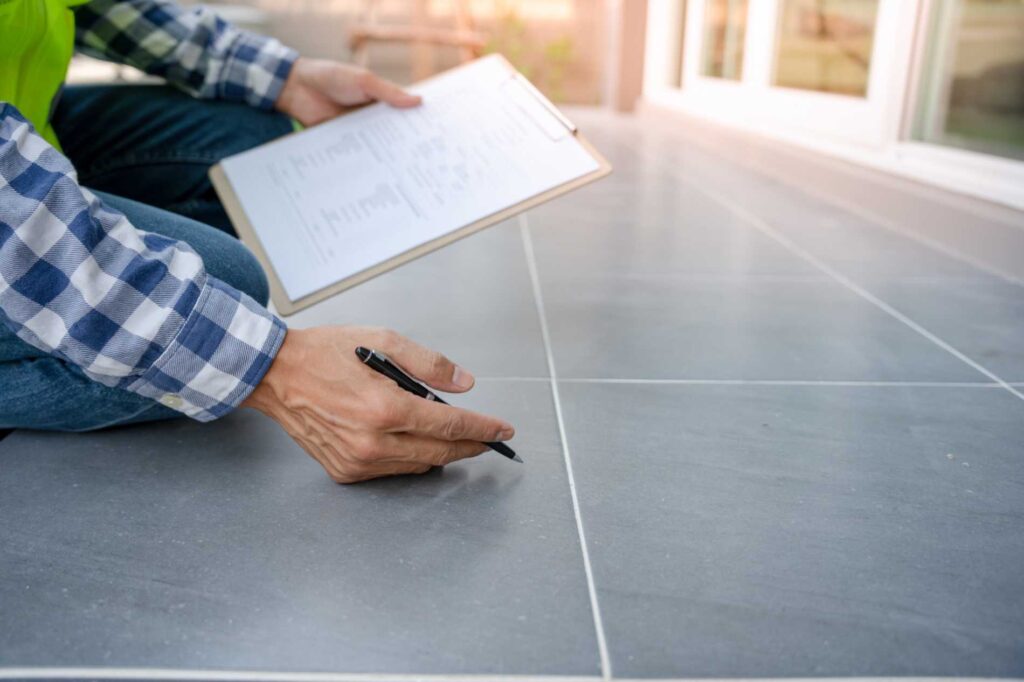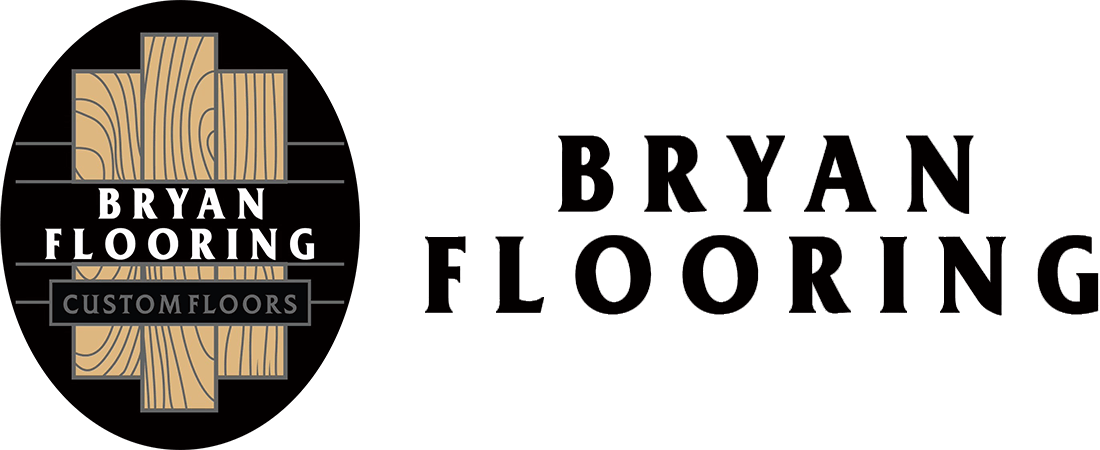Floor Inspection Checklist
If you plan on doing spring cleaning or like to keep your weekly or monthly cleaning tasks organized, you probably love a good cleaning checklist. Before you clean, wax, or repair your home’s flooring, you should inspect it to see what condition it is in and what priorities you need to focus on. Damaged flooring can be a safety hazard, and damage will typically worsen over time and cost more to repair. Regularly inspecting and maintaining your flooring will extend its lifespan and maintain its beauty and safety. At Bryan Flooring, we offer flooring inspection services and flooring repair and replacement. The following is our definitive flooring inspection checklist.

Hardwood Flooring Inspection Checklist
Natural hardwood flooring can last a lifetime with proper care and maintenance. Scheduling regular inspections and checking for signs of damage will allow you to catch problems before they get bigger and more expensive. Here’s what to look for when inspecting your wood flooring:
- Gaps – Look for large gaps between planks or signs that gaps have gotten bigger or irregular. Gaps can occur due to extreme temperature changes, water damage, when the air in your home is excessively dry, or due to installation problems or errors.
- Pest or insect damage – Look for signs of termites, insect, or rodent damage.
- Animal damage – Look for signs of damage by your pets or other animals. Look for scratches, gouges, and stains.
- Warping or buckling – Warping and buckling is when the floor lifts in one or more places. This happens due to extreme water damage, humidity, or moisture.
- Mold or mildew – Mold and mildew are caused by water damage, condensation, and excess moisture. Mold can harm your health and damage hardwood, so it’s best to catch mold and mildew problems early.
- Cupping or crowning – Cupping and crowning are caused by water damage and excess moisture. You will see that the edges of the planks are higher than the center or that the center is higher than the edges.
- Stains and discoloration – If your floor isn’t sealed, it is at risk of stains and discoloration. Look for areas where the floor is darker or lighter than the surrounding area.
- Problems with the finish – Finish problems are problems with the floor’s wax, stain, or varnish. Look for signs that the finish is peeling, scratched, or contaminated with debris.
Carpet Flooring Checklist
A high-quality carpet flooring can improve your home’s comfort and safety. Keeping it clean and dry is essential to protecting its value and lifespan. Here is what to check when you’re inspecting carpeting:
- Ripped seams – Ripped seams can make the carpet unsafe as they can be a trip hazard. They also allow dirt and debris to get under the carpet. Make sure the edges and transitions are clear and secure, and the edges are tight.
- Water damage – Look for signs of moisture or water damage, like soggy or water stains. Water damage can lead to mold and mildew and can damage the flooring underneath your carpet.
- Mold or mildew —Mold and mildew can cause health problems. If you notice any wet carpeting or water stains, you will need a professional mold inspection.
- Bubbles or humps – There should not be any raised areas in your carpeting. If you find bubbles or humps, the carpeting may need to be reinstalled.
- Gaps – Your carpet might shrink over time, which leads to gaps around the edges.
Tile Flooring Checklist
Natural stone or vinyl tile flooring damage can be a trip hazard. Tile damage also looks unattractive and can affect the value of your home. When inspecting your tile floor, look for:
- Stained or damaged grout – Stained grout is unattractive and can make your tile flooring look old before its time. Schedule regular grout cleaning services to keep your grout clean and bright. Damaged grout, like holes, cracked or missing chunks, can eventually cause loose or damaged tiles.
- Chipped or missing tiles – Chipped or missing tiles can increase your risk of tripping. A chip in your tile flooring can worsen over time and eventually cause the whole tile to come loose. The sooner you catch the problem, the less likely you’ll lose the tile.
- Cracked tiles – Look for even small hairline cracks in your tiles. Small cracks can often be repaired without replacing the tile.
- Loose tiles – Loose tiles will get worse over time and can make you trip. Check for wobbly or loose tiles in your flooring.
Laminate Flooring Checklist
Laminate flooring is a cost-effective, attractive alternative to natural hardwood flooring. However, if it is not cared for properly or installed correctly, it can have problems. When inspecting your laminate flooring, look for:
- Gaps – Like hardwood floors, your laminate flooring can develop gaps. Look for gaps between planks or along the edges of the flooring.
- Buckling – Look for raised edges or centers of flooring planks. Buckling can be caused by moisture or water damage.
- Peaking – Peaking occurs when the laminate planks are putting pressure on each other and the joints are lifted. It can cause major problems if ignored.
- Water damage – Water damage can cause stains, buckling, gaps, mold, and mildew growth. Look for water stains or other signs of water damage.
- Scratches or gouges – Look for scratches or gouges in the planks. These can be caused by children, animals, footwear, or dragging furniture across the floor.
Schedule a Flooring Inspection with Bryan Flooring
If you want to assess the age, condition, and safety of your home’s flooring, call us today or contact us online to schedule a flooring inspection. Our team at Bryan Flooring has decades of experience in the flooring industry. We can quickly identify flooring issues and find cost-effective solutions that will enhance the beauty, safety, value, durability, and longevity of your flooring.
